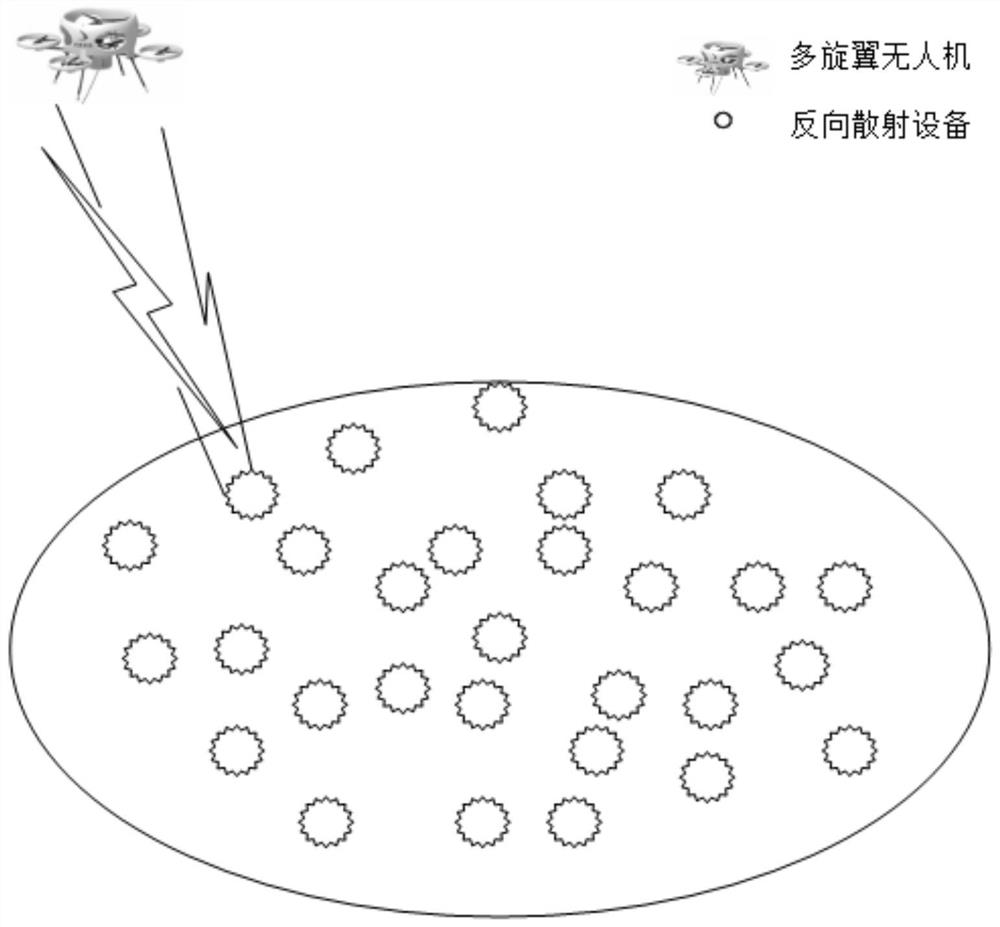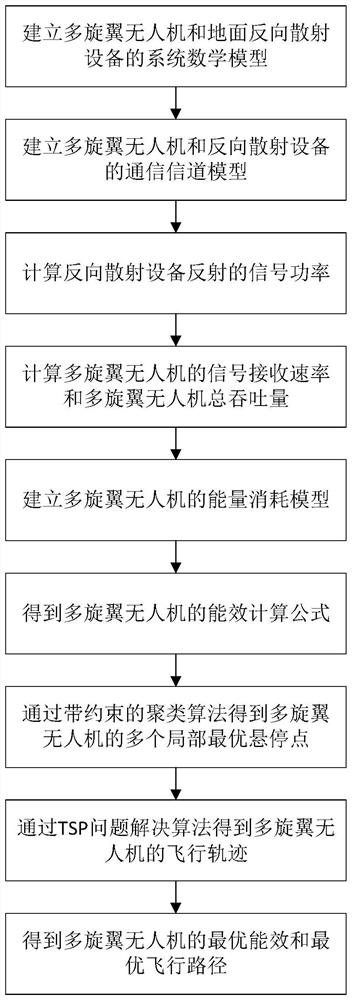Energy efficiency optimization method for auxiliary backscatter communication system of multi-rotor unmanned aerial vehicle
A multi-rotor unmanned aerial vehicle, backscattering technology, applied in scattering propagation systems, radio transmission systems, transmission systems, etc., can solve the problems of limited communication distance, large number of receivers, and increased construction costs of the Internet of Things, and achieve savings Cost, excellent communication quality, and the effect of saving airframe energy
- Summary
- Abstract
- Description
- Claims
- Application Information
AI Technical Summary
Problems solved by technology
Method used
Image
Examples
Embodiment Construction
[0051] Below in conjunction with embodiment the present invention is described in further detail:
[0052] figure 1 It is a model diagram of the multi-rotor drone-assisted backscatter communication system of the present invention. In the system structure, there is a multi-rotor drone and K backscatter devices, and the K backscatter devices have been deployed in a predetermined area. The multi-rotor UAV acts as a mobile signal transmitter and signal receiver. The backscatter device can collect the signal emitted by the multi-rotor UAV to provide energy for its own operation, and change the antenna load impedance to make the amplitude of the signal reflected by the antenna , frequency or phase changes and then transmit information to the signal receiver of the multi-rotor UAV, and the multi-rotor UAV starts from the starting point to collect information and then returns to the starting point.
[0053] figure 2 It is a flow chart of the multi-rotor drone-assisted backscatter c...
PUM
 Login to View More
Login to View More Abstract
Description
Claims
Application Information
 Login to View More
Login to View More - R&D
- Intellectual Property
- Life Sciences
- Materials
- Tech Scout
- Unparalleled Data Quality
- Higher Quality Content
- 60% Fewer Hallucinations
Browse by: Latest US Patents, China's latest patents, Technical Efficacy Thesaurus, Application Domain, Technology Topic, Popular Technical Reports.
© 2025 PatSnap. All rights reserved.Legal|Privacy policy|Modern Slavery Act Transparency Statement|Sitemap|About US| Contact US: help@patsnap.com



